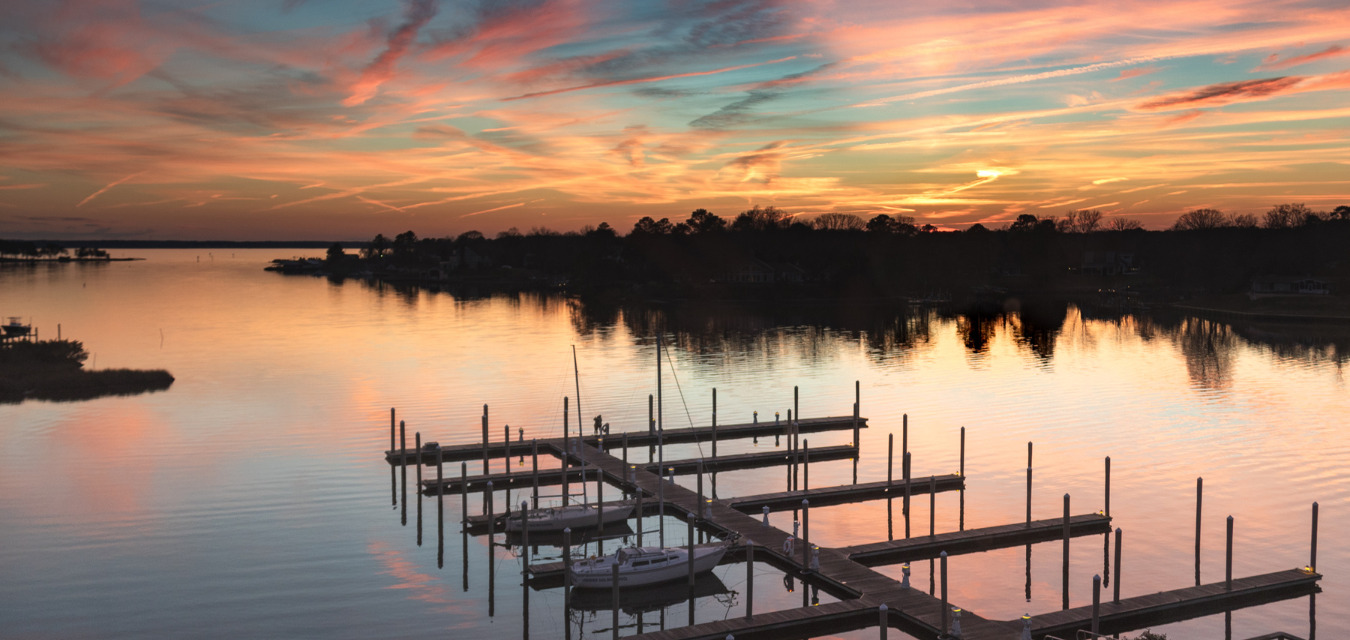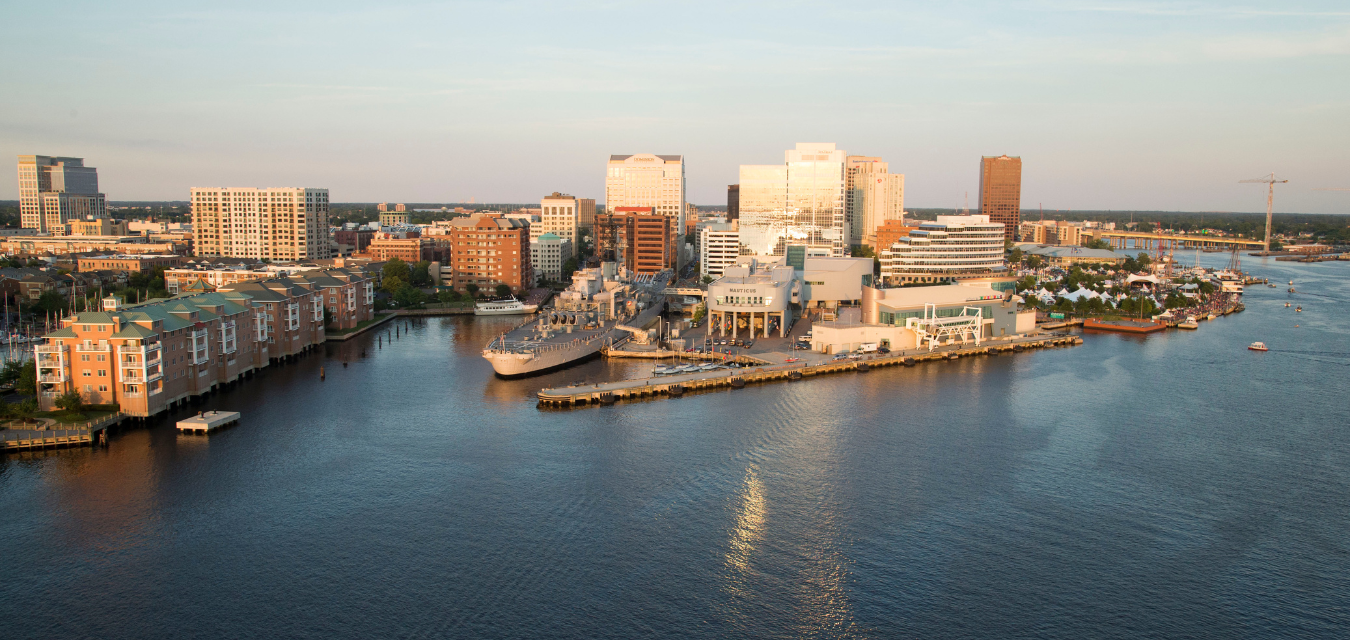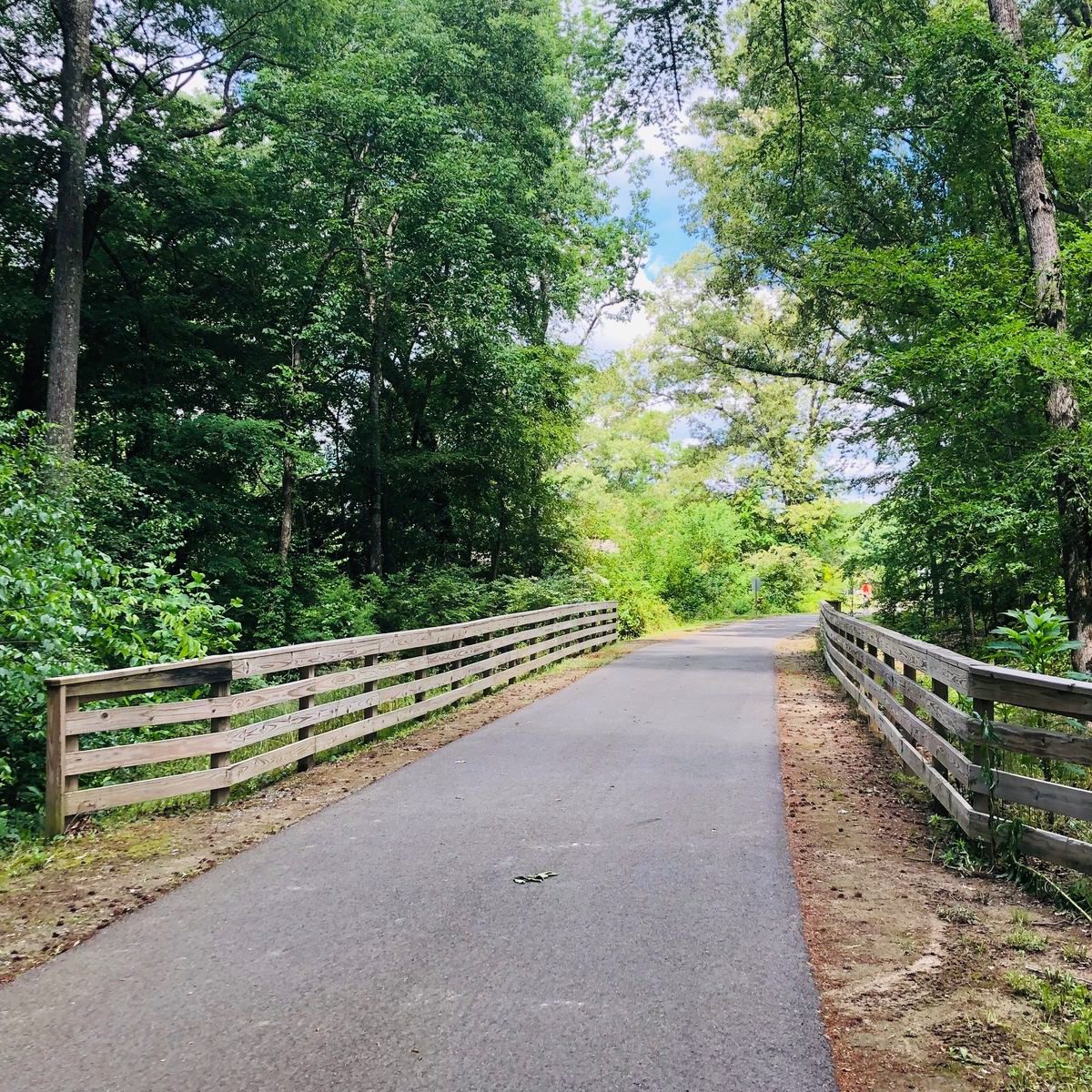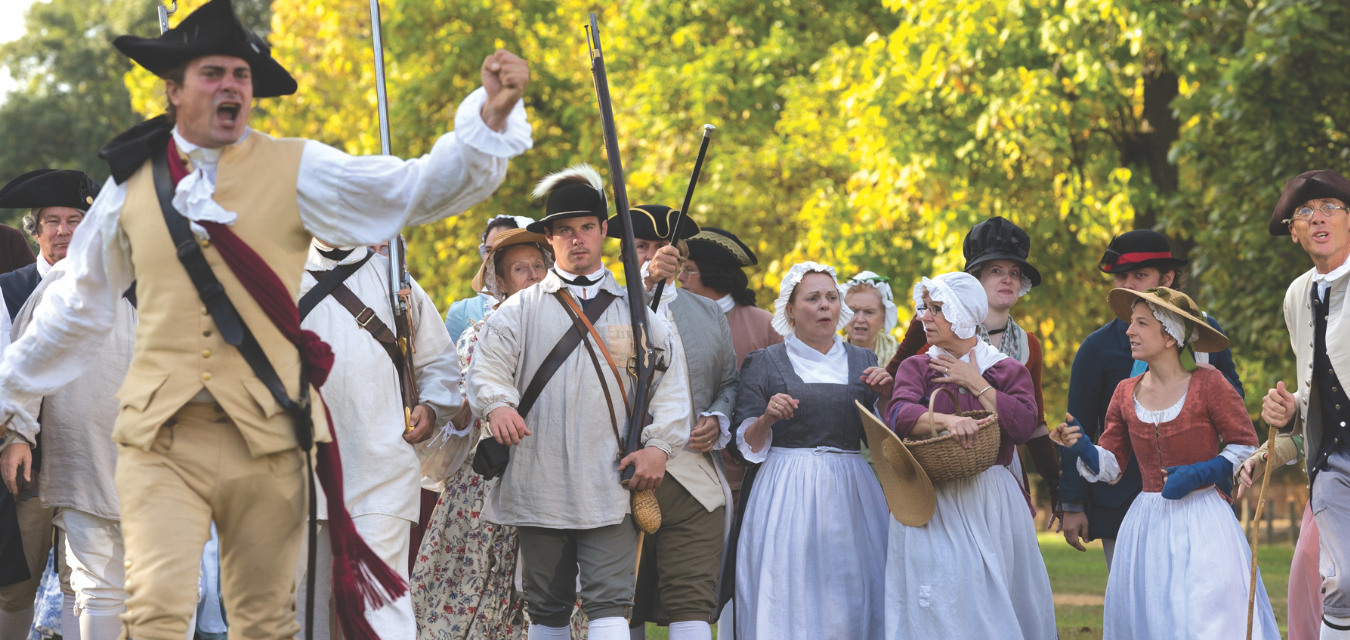Biscuits, oysters, and history await on a waterside road trip through eastern Virginia
Growing up in northeastern North Carolina, my version of wonderland looked a lot like eastern Virginia: Norfolk was where Broadway shows toured and where we went to the mall; concerts and Trader Joe’s if we were in Virginia Beach. Numerous school field trips took me to the colonial settlements in Williamsburg and Jamestown, and the Northern Neck was completely bypassed for its more urbane neighbor, Richmond. More than a decade of time now separates me from my childhood version of Virginia, but I recently returned with a newfound interest in its foodways, plus a hunger to understand how the convergence of history, art, culture, and food make Tidewater the most exciting little corner of the Commonwealth.
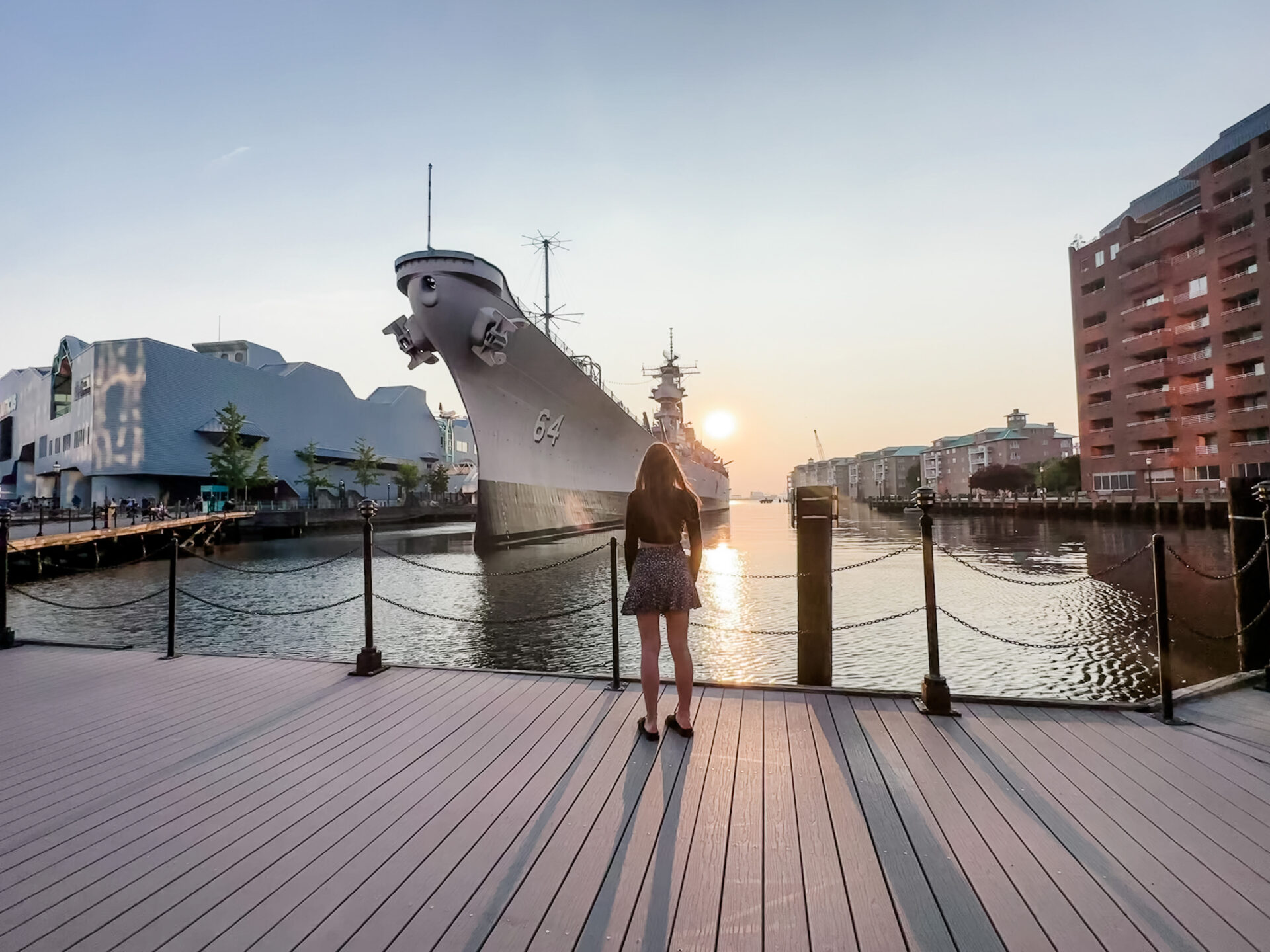
Norfolk is one of the oldest cities in Virginia, initially incorporated by English settlers in 1607. Located at the estuary where the James River, Chesapeake Bay, and Atlantic Ocean meet, Norfolk operated as a port city between Charleston and Philadelphia during the colonial years, a railroad hub for Norfolk Western in the 19th century, and an integral part of the Underground Railroad, connecting enslaved people with rail and boat transportation to Northern destinations. Today, the city is home to a Naval Station, Airforce base, NSA base, Marine Corps base, and Coast Guard Station—in case you forget this, the fighter pilot-like tendencies of every driver on the highway will quickly remind you.
To kick off my recent tour, I beelined to the Botanical Gardens, which admits (for free) visitors coming from or heading to the airport. I had just left my home base of Charleston, but the azalea-saturated gardens launched me right back: Architect Frederic Heutte developed the design after visiting Hampton Park in the Holy City, back in 1938. Today, the gardens occupy 175 acres of green space in this industrial metropolis, complete with greenhouses containing orchid collections, a butterfly garden, and miles of trails winding around a canal.
Norfolk does green space well, especially for an industry-driven city. Trees grow in every available spot of dirt around the brownstones in the Freemason and Ghent neighborhoods downtown, which border the Hague, a body of water that flows from the waterfront and is bordered by parks. Four Eleven York, a restored three-story inn on the Freemason side of the Hague, offers complimentary bicycles to guests, so you can get to know the flora and fauna.
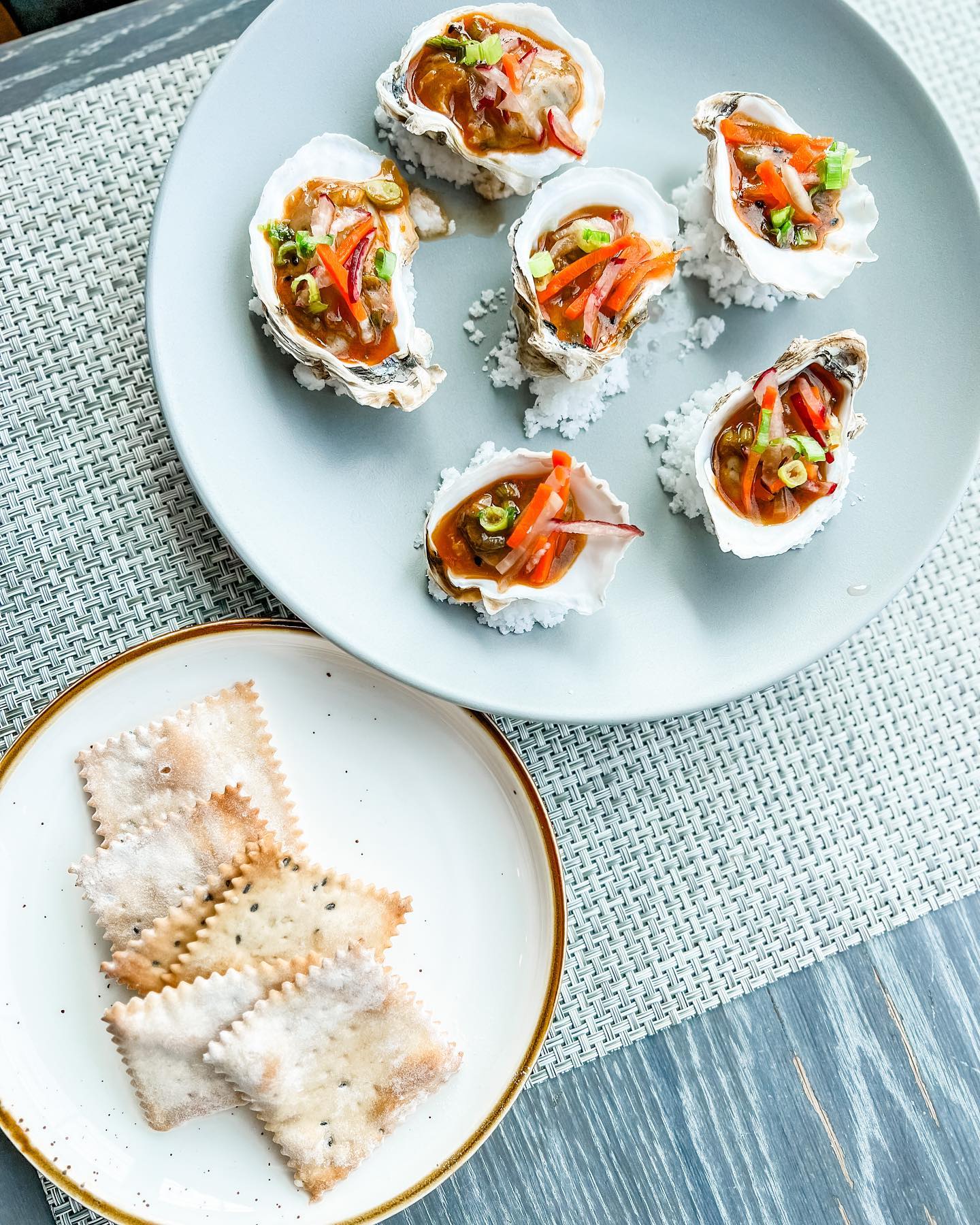
I biked along the Elizabeth River Trail to the Chelsea District, home to independently owned breweries, galleries, and coffee shops and community events like artist markets and musician jams. The breweries don’t serve food, but the Bakehouse at Chelsea does—wood-fired 12-inch Neapolitan pies and, on weekends, sweet and savory pastries. The bakery’s sparse seating means you only sit there while you wait for them to fire and box up your pizza. Take it to Smartmouth Brewing or Benchtop Craft Brewing, both a short walk from Bakehouse, where you can wash it down with one of the seasonal sours on tap while checking out whichever local musician is crooning to the crowd.
Another thing this area does well? The arts. Numerous performing artists grew up or have roots in Norfolk and the surrounding Hampton Roads area, including Kishi Bashi, Pharrell Williams, Mark Ruffalo, and Clarence Clemons. There’s always some sort of off-Broadway play, symphony, or concert happening downtown—usually in much smaller, more intimate venues than in other cities. Downtown, you’ll also find the Chrysler Museum of Art, known for its 30,000 pieces spanning 5,000 years, but my favorite way to experience one-of-a-kind art is at the Glass Light Hotel. This Marriott property displays two floors of exquisite pieces from Doug and Pat Perry’s personal collection, including a massive pink bunny, permanently settled in a “draw me like one of your French girls” pose at the hotel bar, which is also known for its craft cocktails.
When it’s time for dinner, strike out on Granby Street, where old standbys mingle with new eateries. For a great display of local fare, hit up Codex, a roughly 40-seater restaurant with a shotgun kitchen and a staff that knows people by name. Usually, a restaurant is known for its cocktails or its food—here, it’s both. Beverages riff on classic cocktails, like a tarter, glammed-up version of the lemon drop and a tall, effervescent gimlet on the rocks. The menu modernizes southeastern Virginia delicacies from oysters to pork belly. Knowing my route along the eastern shore, I kicked off with regional Rappahannock River oysters served with a flashy yuzu mignonette.
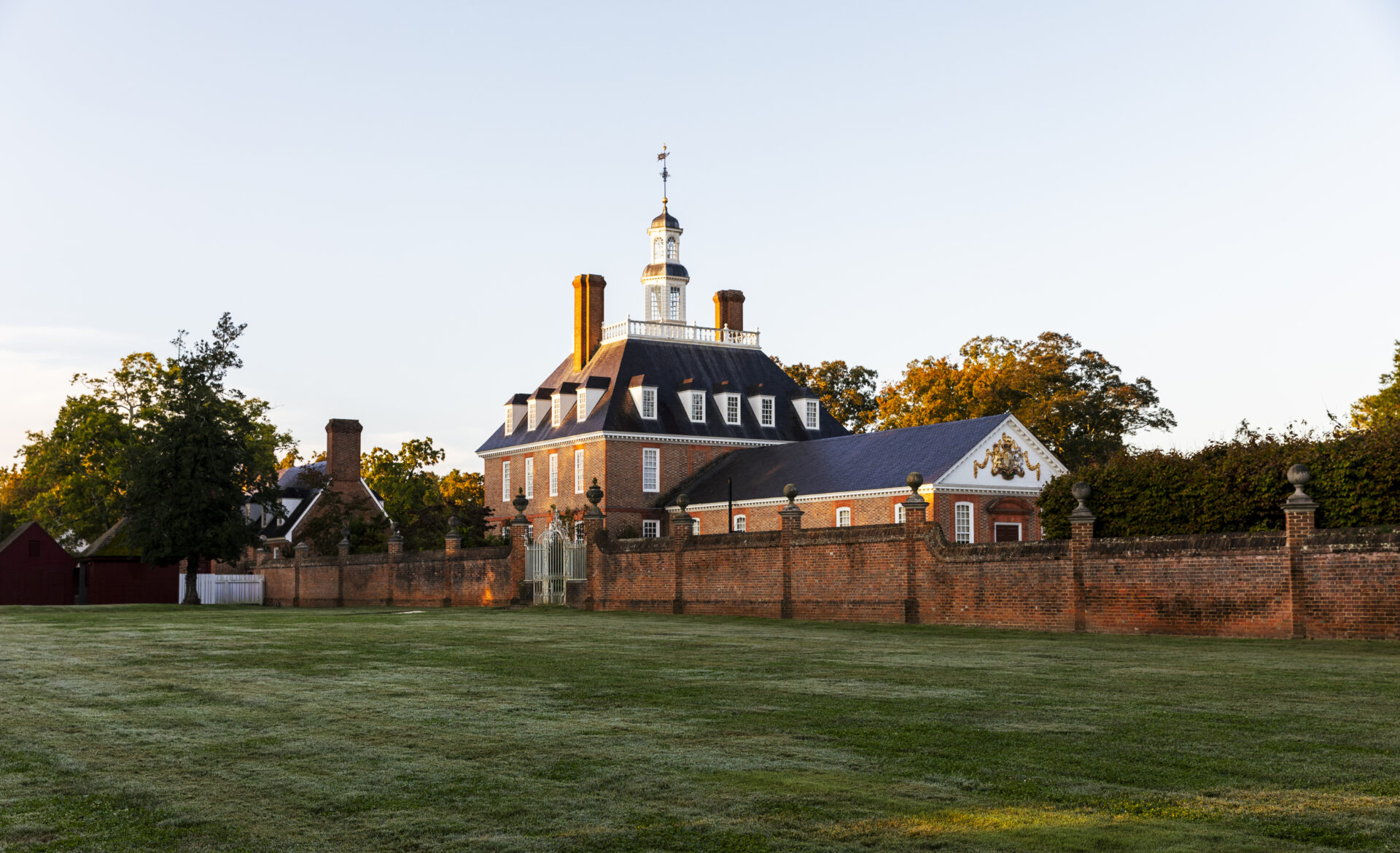
You can follow up Norfolk’s art and culture by diving into eastern Virginia’s rich history preserved in its colonial towns. I hit Interstate 64 with sights set on Williamsburg, but not before stopping for some road fuel at Handsome Biscuit, which is known for its sweet potato biscuit sandwiches. The humble Shortie—a crumbly biscuit topped with a fried egg, melty cheddar, and thick- cut bacon—made me a firm believer that all fried eggs on a biscuit should have a runny yolk and heavy seasoning of black pepper.
Interstate 64 will not turn any heads, but the two-lane scenic byway known as Colonial Parkway draws picnickers and sightseers with its red-brick tunnels and waterside overlooks (I highly recommend listening to the Hamilton soundtrack while driving it). At 23-miles long, Colonial Parkway connects Yorktown, Williamsburg, and Jamestown. (Portions of the Parkway will be closed for road construction until mid-2026. Click here for latest details and closures.) Williamsburg is perhaps the best-known and for good reason: It housed the Virginia capital before it was moved to Richmond in 1780, and it’s home to the College of William & Mary, where alumni include Thomas Jefferson, James Monroe, and John Tyler. The town blends remnants of English colonial life with modern residences and commercial areas, some housed within original structures, and costumed reenactors roam the streets, bidding you good day or striking up a conversation in the native tongue of the historic figure they’re portraying. Treat yourself to a picnic lunch (or at least fancy snacks) at the Cheese Shop, which has been run by the same family for 52 years and is a destination for gourmet sandwiches, fine cheeses, and its renowned house dressing (now sold by the quart jar along with bags of bread ends for dunking).
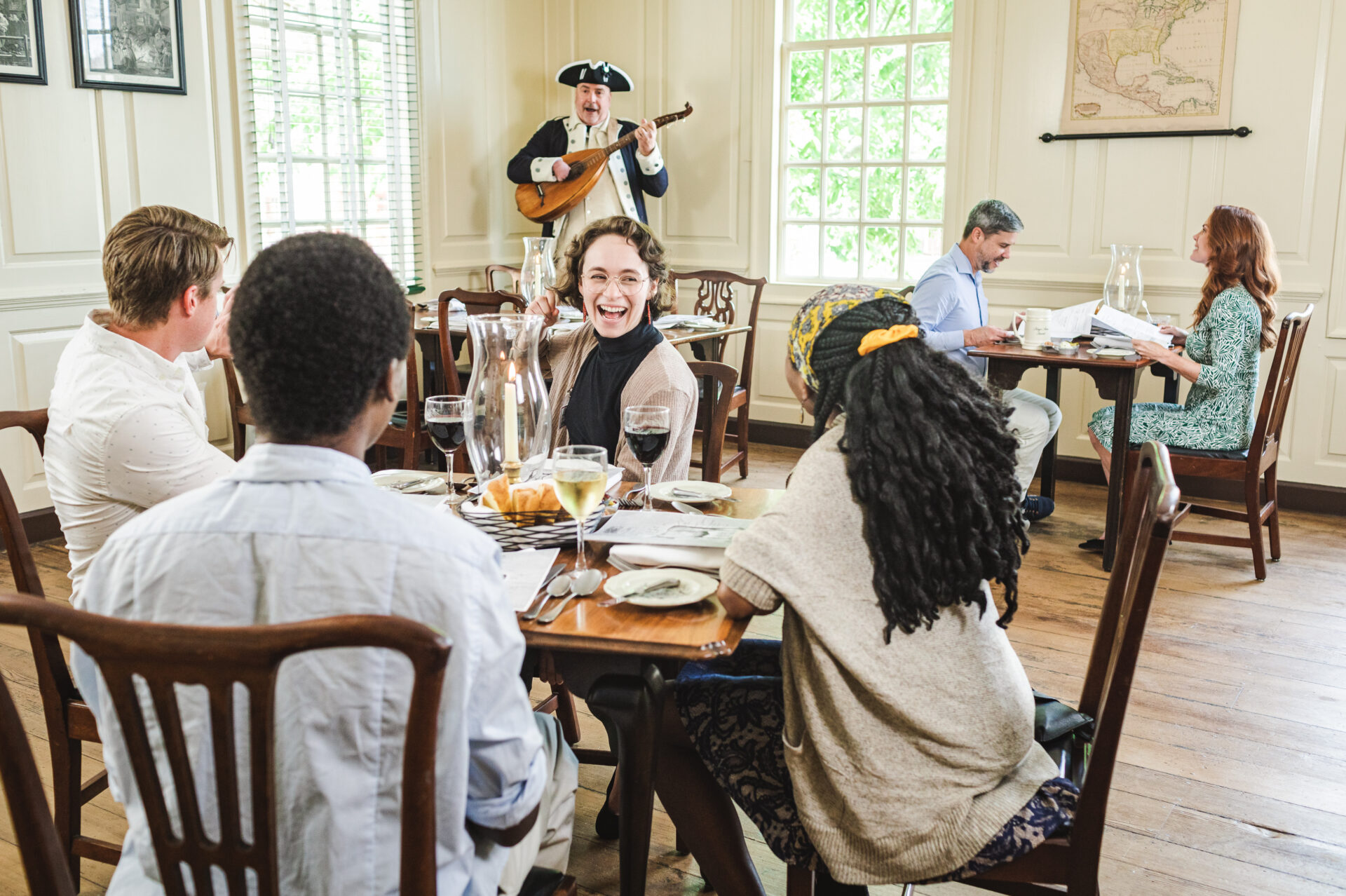
Much of Williamsburg’s preservation is credited to John D. Rockefeller Jr., who caught wind of the area’s tourism potential in the 1920s. The five-star Williamsburg Inn is considered his crown jewel in the town’s development. Opened in the 1930s, Williamsburg Inn has hosted its share of dignitaries, presidents, and even Queen Elizabeth II (the only stateside hotel to do so). The inn’s original fixtures still decorate the guest rooms, artfully matched with timeless decor. It’s worth swinging by to see the sumptuous design and enjoy a cocktail and pizza made with colonial-era Red May wheat berry flour on the outdoor Social Terrace.
Dinner options span the centuries in Williamsburg: For a truly of-the-era experience, circa-1700s taverns like Christiana Campbell’s Tavern and King’s Arms Tavern serve regional fare inspired by actual recipes from the 18th century, like fried oysters from Elizabeth Raffald’s The Experienced English Housekeeper (1769) and stewed beef, cooked low and slow with mushroom gravy, from John Farley’s The London Art of Cookery (1787). The meals unfold at candlelit tables, and live music comes from pocket violinists and flautists. Kids love the show; parents love the punch bowls.
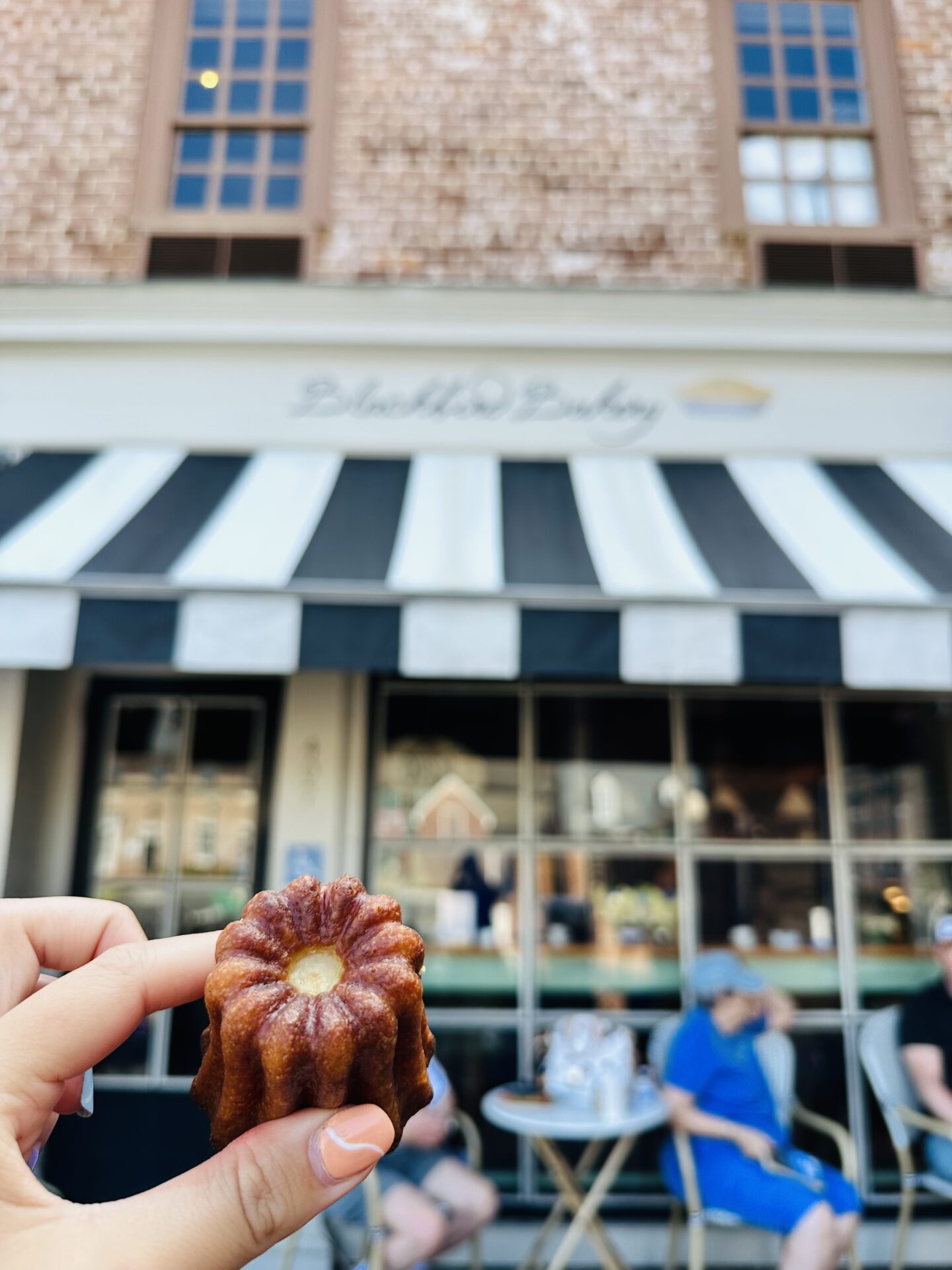
But it’s not all a scene from The Patriot. Fat Canary is a quintessential Williamsburg restaurant located right in Merchant’s Square. Owned by the same family behind the Cheese Shop (and housed in the same building), this green-walled bistro serves up elevated plates made with regional ingredients (think Virginia ham, Rappahannock River oysters, seasonal greens) and a global selection of wines in a space that exudes hospitality and warmth.
Smaller than Williamsburg, Yorktown channels a similar historic charm in its riverside red-brick buildings, and its historic significance is palpable at the Yorktown Battlefield. Grab breakfast at Blackbird Bakery (their pillowy yeast rolls are some of the best) and hit the Parkway, eastbound. There’s a visitor center where you can read about its history, but nothing compares to walking the grounds on foot, climbing the earthen mounds that English and Patriot soldiers pummeled with cannonballs, and skirting the bluff along the York River that was so integral to this location’s role in the American Revolution.
If your on-foot explorations work up an appetite, stop by Mobjack Coffee Roasters, located within the historic Cole Digges House. Built in 1726, this building draws lots of foot traffic with its charming red-and-white brick exterior and teal trim, but regulars know it as a woman-owned spot that’s specialized in coffee and tea for more than 200 years. The pastry case brims with sweet pick-me-ups to pair with the in-house roasted coffee, such as the fan-favorite oatmeal cream pie. If you need something with a little more heft, put in an order for a grilled cheese on homemade sourdough with the soup of the day, and take your lunch to picnic along the York River.
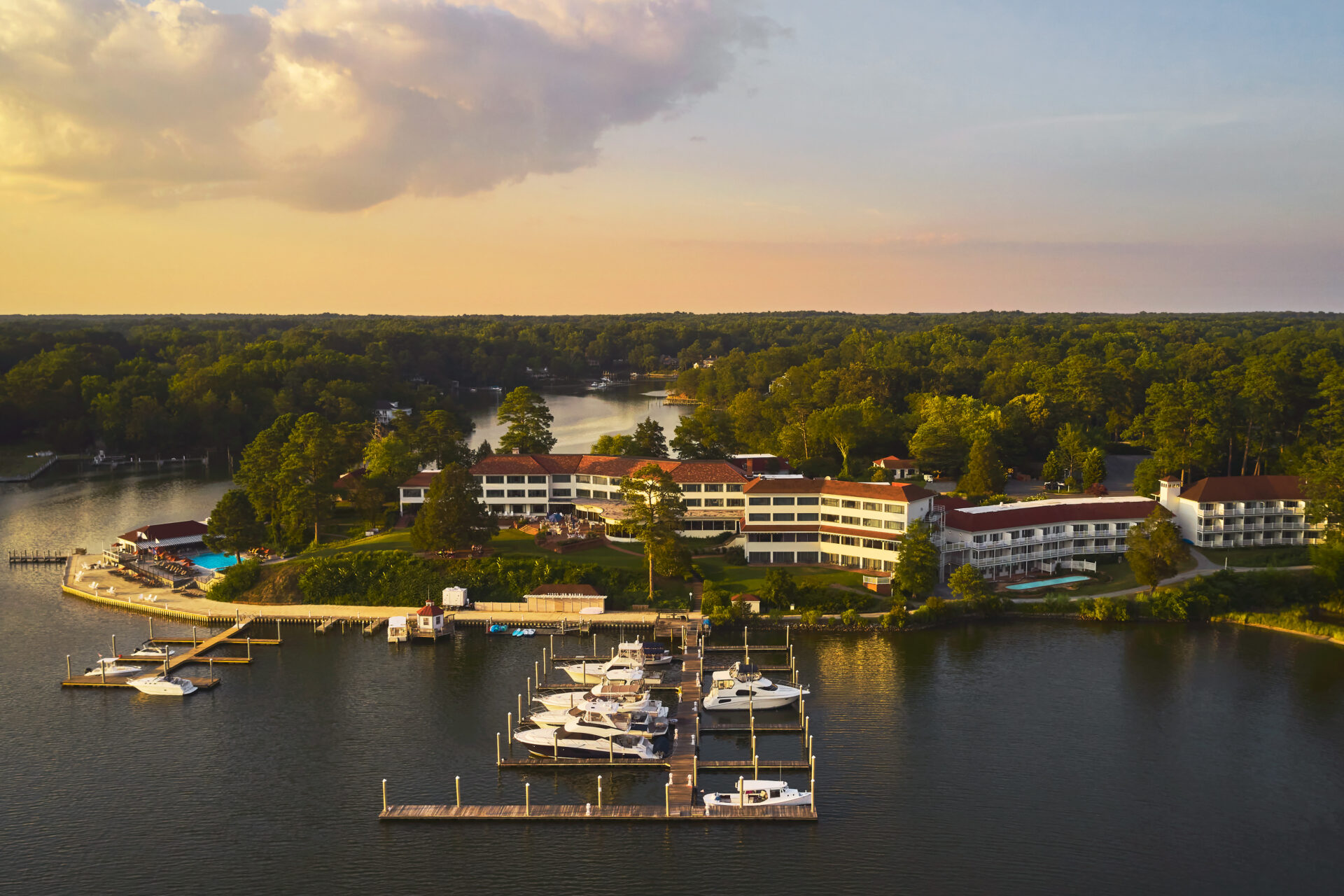
The water here is fast and dark and murky—415 years ago, John Smith wrote that “oysters lay as thick as stones” in the Chesapeake Bay, indicating that he and his crew could see well into the depths of the heavily filtered water. And while Smith had a flair for embellishment, scientists and ecologists widely share the consensus that the number of oysters in the bay in 1998 was around 1 percent of the amount present when colonists first arrived in Virginia. In Irvington, the hospitality industry is working to reverse that.
Irvington sits at the southernmost tip of Virginia’s Northern Neck, which references the peninsula wedged between the James River and the Chesapeake Bay. Agriculture and nautical roots run deep in its towns, which also have a hefty share of history—such as playing home to James Madison and the birthplaces of two other founding fathers. Irvington itself is a one-stoplight town with crepe myrtle trees lining the streets—and exclusively independent businesses.
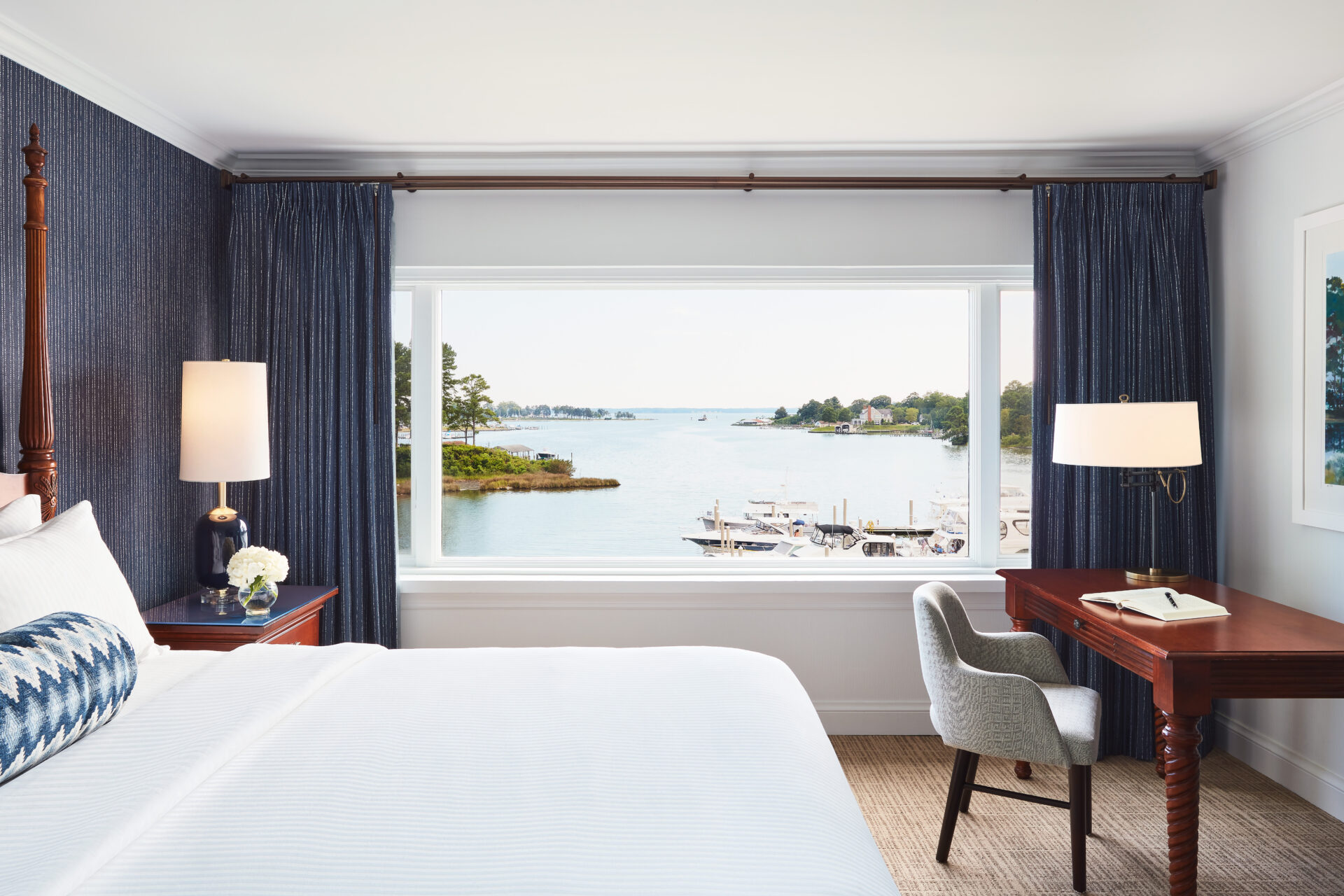
Right on the edge of Carter’s Creek, the Tides Inn has drawn generations of guests since 1947. What began as a spot for the area’s watermen to enjoy a warm meal and some respite evolved into a waterfront resort with 70 rooms, a pool, a beach, a marina with slips for sail-in guests, full dining options, and water activities. Situated on a bluff in a cove, the resort property experiences its share of erosion and high algae growth in its waters—a side effect of operating in an area where the land is at odds with increasing development and warming climes. Concerned about longevity of the inn’s operations, the owners (still the same founding family) brought on Will Smiley and Matt Little as the resort’s ecologist and horticulturist, respectively, in 2021. The two work in tandem to promote the Tides Inn’s natural landscape—both surf and turf—and turn their conservation work into edible programming that guests can also participate in, from harvesting honey from the on-site beehives to catching and picking Chesapeake Bay blue crabs right out of the water.
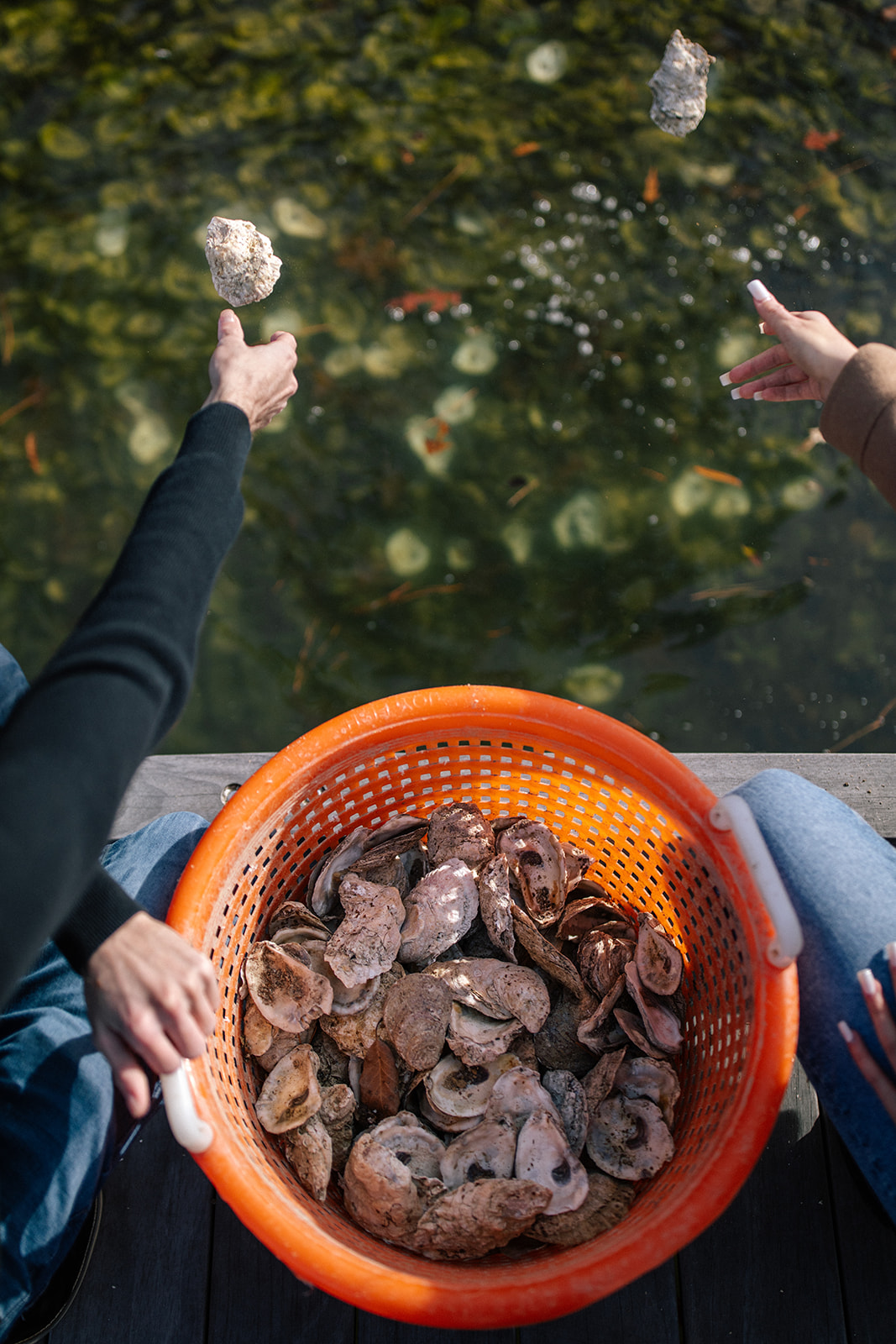
They’ve turned the property around the Tides Inn into the largest private living shoreline in Virginia. Parts of the bank are more oyster shell than sand, a maneuver that promotes oyster growth by giving oyster larvae (spat) a substrate to adhere to. As the oysters grow, they filter the water. Smiley couples this cultivation method with cages of oysters hanging off pilings along the boardwalk, actively filtering the creek water that flows through them. While they aren’t serving these Carter’s Creek oysters in the on-site Chesapeake Restaurant yet, they do recycle oyster shells from the restaurant to use as spat-on-shells. If you need a taste of hyperlocal oysters, however, join Smiley on the Chesapeake Gold experience where you’ll learn about the vital role the oysters play in these waters, see tanks of baby oysters growing on the dock, distribute empty shells along the shoreline, and wrap with an oyster roast and bubbles on the water.
In an industry where vacation often is presented as an escape from the surrounding world, the Tides Inn offers an experience that’s hyperconscious of its environment. Resort general manager Loraine Trollip says, “It’s not just another holiday where you’re eating and drinking a lot, but you feel like you’re making a difference.”
This sentiment captures hospitality along the eastern Virginia shore. Each stop felt impactful as I grew my knowledge around a keystone species, walked a battlefield that shaped the nation’s history, or supported a thriving community where military and art collide. I look forward to returning to even clearer waters in the future.
keep reading
On the Road
Norfolk
This lively river city on the Chesapeake Bay, Norfolk teems with vibrant dining options, art galleries, concert venues, and boutique shops.
On the Road
Snapshot: Williamsburg, Virginia
While the connection to history may be your first point of entry in Williamsburg, the city’s dining scene, from biscuits to breweries, is worthy of a trip.
On the Road
Williamsburg
For history lovers, there are few destinations in America as transporting as the city of Williamsburg, a glimpse back into the Colonial era.
share
trending stories
-
New Restaurants in Arkansas
-
Shrimp and Grits: A History
by Erin Byers Murray -
Tea Cakes, A Brief History
by TLP Editors -
Gullah Geechee Home Cooking
by Erin Byers Murray -
A Cajun Christmas Menu
by TLP Editors





